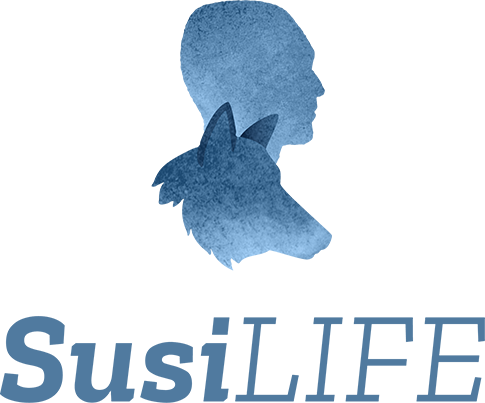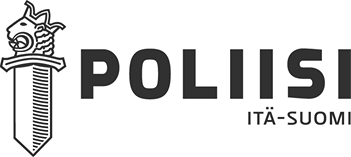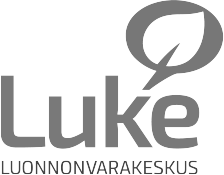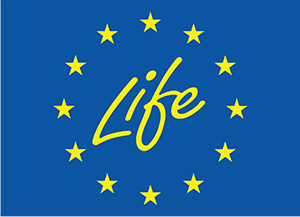LIFE BOREALWOLF conveys information about wolves and their behaviour, promotes local interaction and provides tools for the prevention of adverse impact and losses caused by wolves.

LIFE BOREALWOLF conveys information about wolves and their behaviour, promotes local interaction and provides tools for the prevention of adverse impact and losses caused by wolves.

The project starts in October.
Collection and monitoring of DNA samples: Luke plans how the collection will be conducted.
Interaction and cooperation in wolf regions: Planners from the Finnish Wildlife Agency start working.
Police and game warden patrol in Eastern Finland: The Eastern Finland game patrol starts operating.
Communication: LIFE BOREALWOLF accounts open in social media services.
Collection and monitoring of DNA samples: Exchange of good practices on wolf DNA collection between neighbouring and European countries. An expanded collection of DNA samples starts in November. The instructions for DNA collection will be updated. Development of the sample collection result service will begin.
Interaction and cooperation in wolf regions: A survey identifies the attitudes of people towards wolves. Planners from the Finnish Wildlife Agency get to know the citizens living near wolf territories. The planners educate and advice citizens. The large carnivore contact person training will be updated.
Police and game warden patrol in Eastern Finland: The game patrol will continue its work.
Prevention of losses: A literature review of the best practices in Europe on how to cope with wolves is prepared. Seminar on protecting dogs will be organized.
Modelling tools for wolf population management: The development of modelling tools begin. Stakeholders are asked what challenges the tool should address.
Communication:The project is presented in different medias. A wolf information package is prepared for members of Parliament and journalists. A morning coffee event is arranged for journalists. Members of Parliament are provided with information about current actions. Information about carnivores and wolves is prepared for schools and citizens.
Collection and monitoring of DNA samples: The collection of DNA samples continues. A summary of the previous collection period will be published. Development of the sample collection result service is ongoing.
Interaction and cooperation in wolf regions: Planners from the Finnish Wildlife Agency work together with citizens living near wolf territories. A shared set of guidelines is prepared for territory cooperation groups. Education material for large carnivore contact persons goes online.
Police and game warden patrol in Eastern Finland: The game patrol will continue its work.
Prevention of losses: Wolf scaring devices are tested in farms. Fence materials are delivered with only a few days’ response time to farms needing immediate protection.
Modelling tools for wolf population management: Tools for multi-species population management are tested in the first elk regions. The first version of modelling tool helping in wolf management is ready.
Communication: The project reports on the progress of the measures. A trip into nature and a morning coffee event is arranged for journalists. Members of Parliament are provided with information about current actions. Information about carnivores and wolves is prepared for schools and citizens. The first school visits start.
An interim project report is prepared.
Collection and monitoring of DNA samples: The collection of DNA samples continues.A summary of the previous collection period will be published. Development of the sample collection result service is ongoing.
Interaction and cooperation in wolf regions: Planners from the Finnish Wildlife Agency work together with citizens living near wolf territories. The territory cooperation groups receive common instructions.
Police and game warden patrol in Eastern Finland: The game patrol will continue its work.
Prevention of losses: Wolf scaring devices are tested in farms. Fence materials are delivered with only a few days’ response time to farms needing immediate protection.
Modelling tools for wolf population management: Tools for multi-species population management are tested in the first elk regions. The modelling tool helping in wolf management is tested.
Communication: The project reports on the progress of the measures. A seminar on conflict between people and animals is held in Helsinki. Public event focusing on wolves is arranged for citizens in the western Uusimaa region. A trip into nature and a morning coffee event is arranged for journalists. Members of Parliament are provided with information about current actions. The school visits continue.
Collection and monitoring of DNA samples: The collection of DNA samples continues.A summary of the previous collection period will be published. A scientific article is written about the results of DNA monitoring.
Interaction and cooperation in wolf regions: Planners from the Finnish Wildlife Agency work together with citizens living near wolf territories.
Police and game warden patrol in Eastern Finland: The game patrol will continue its work.
Prevention of losses: A toolkit is built to prevent losses of domestic animals. Fence materials are delivered with only a few days’ response time to farms needing immediate protection.
Modelling tools for wolf population management: Tools for multi-species population management are tested in the first elk regions. The modelling tool is built and deployed for forecasting population management measures.
Communication: The project reports on the progress of the measures. A trip into nature and a morning coffee event is arranged for journalists. Public event focusing on wolves is arranged for citizens in the western Uusimaa region. Members of Parliament are provided with information about current actions. The school visits continue.
Collection and monitoring of DNA samples: The collection of DNA samples continues.A summary of the previous collection period will be published.
Interaction and cooperation in wolf regions: Planners from the Finnish Wildlife Agency work together with citizens living near wolf territories. A survey identifies the attitudes of people towards wolves.
Police and game warden patrol in Eastern Finland: The game patrol will continue its work.
Prevention of losses: Wolf scaring devices are tested in farms. Fence materials are delivered with only a few days’ response time to farms needing immediate protection.
Modelling tools for wolf population management: Tools for multi-species population management are tested in the first elk regions. The modelling tool is ready. Scientific articles are written about the modelling tools.
Communication: The project reports on the progress of the measures. A trip into nature and a morning coffee event is arranged for journalists. Members of Parliament are provided with information about current actions. The school visits continue.
The project and its results are assessed.
A final report is released. The project ends in September 2025.
Collection and monitoring of DNA samples: The collection of DNA samples has expanded to all wolf pack territories. DNA samples help to estimate population sizes in more detail.
Interaction and cooperation in wolf regions: The Finnish Wildlife Agency continues to communicate and interact with citizens living near wolf territories. Education material for large carnivore contact persons is online. The territory cooperation groups support citizens and convey local information to the Finnish Wildlife Agency.
Police and game warden patrol in Eastern Finland: Cooperation and exchange of information will be continued between the police and game wardens. The model spreads across Finland.
Prevention of losses: Efficient wolf scaring devices can be loaned from the Finnish Wildlife Agency’s offices.
Modelling tools for wolf population management: Modelling tools support wolf management.
Communication: The project partners continue to cooperate in communication. Information produced during the project will be available online (susilife.fi, riistahavainnot.fi, suurpedot.fi).





